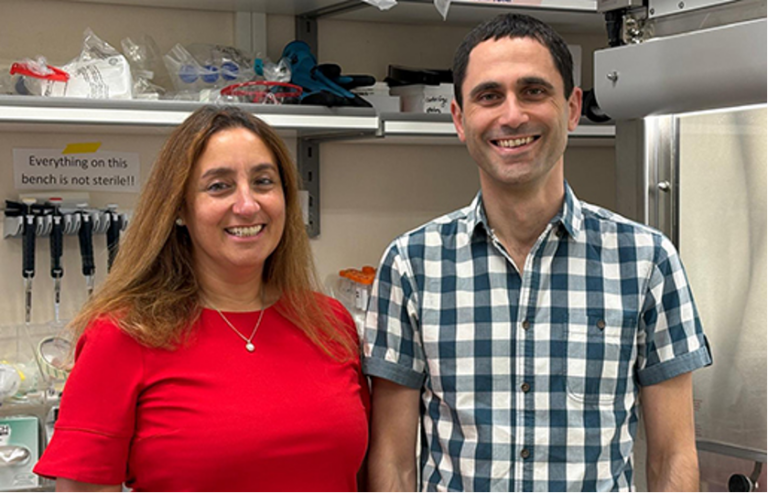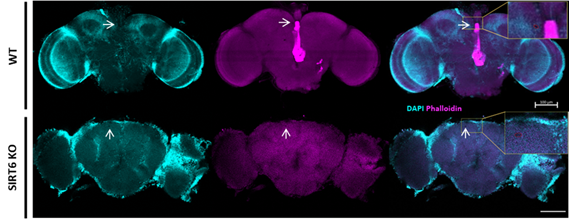Première ! Le Technion et Rambam montrent que l'exposition aux nanoparticules peut provoquer des maladies du cœur

[:fr]Les Nanoparticules, ces particules extrêmement petites mesurées en milliardièmes de mètre, se retrouvent de plus en plus partout, en particulier dans les produits biomédicaux. Leur toxicité a été étudiée de façon générale jusqu’ici, mais une équipe de scientifiques israéliens (Technion, Rambam, TCEEH) vient, pour la première fois de montrer que l’exposition aux nanoparticules (NP) de dioxyde de silicium (SiO2) peut jouer un rôle majeur dans le développement des maladies cardiovasculaires lorsque les NP traversent le tissu cellulaire et circulent dans le système sanguin.
« L’exposition aux nanoparticules est devenue inévitable en raison de la diffusion rapide de cette nanotechnologie, » explique l’auteur principal de l’étude, le Pr Michael Aviram, du Technion, « Cette exposition peut être particulièrement marquée pour les personnes employées dans les laboratoires de recherche et l’industrie des hautes technologies où les travailleurs manipulent, fabriquent et utilisent des nanoparticules. Les nanoparticules à base de silice utilisées à des fins biomédicales, telles que les puces, les traitements ou thérapies génétiques, l’imagerie, la thérapie ou le diagnostic par ultrasons, peuvent aussi poser un risque cardiovasculaire accru pour les patients. » Dans cette étude, les chercheurs ont exposé des cultures de cellules de souris de laboratoire ressemblant aux cellules de la paroi des artères à des NPs de dioxyde de silicium. Les NPs de SiO2 sont toxiques et ont des effets négatifs importants sur les macrophages.
Les NPs et les UFPs (particules ultra fines) peuvent être inhalées et induire des effets biologiques négatifs. Jusqu’à cette étude, leur effet sur le développement de l’athérosclérose était en grande partie inconnu. Ces chercheurs ont découvert, pour la première fois, que la toxicité des nanoparticules de dioxyde de silicium a « un effet significatif important sur l’accumulation des triglycérides dans les macrophages, à tous les niveaux de concentrations d’exposition analysés, et qu’ils augmentent également le stress oxydatif et la toxicité. »
Publication dans la revue Environmental Toxicology décembre 2014[:en]Nanoparticles, extremely tiny particles measured in billionths of a meter, are increasingly everywhere, and especially in biomedical products. Their toxicity has been researched in general terms, but now a team of Israeli scientists has for the first time found that exposure nanoparticles (NPs) of silicon dioxide (SiO2) can play a major role in the development of cardiovascular diseases when the NP cross tissue and cellular barriers and also find their way into the circulatory system.
The research team was comprised of scientists from the Technion Rappaport Faculty of Medicine, Rambam Medical Center, and the Center of Excellence in Exposure Science and Environmental Health (TCEEH).
“Environmental exposure to nanoparticles is becoming unavoidable due to the rapid expansion of nanotechnology,” says the study’s lead author, Prof. Michael Aviram, of the Technion Faculty of Medicine, “This exposure may be especially chronic for those employed in research laboratories and in high tech industry where workers handle, manufacture, use and dispose of nanoparticles. Products that use silica-based nanoparticles for biomedical uses, such as various chips, drug or gene delivery and tracking, imaging, ultrasound therapy, and diagnostics, may also pose an increased cardiovascular risk for consumers as well.”
In this study, researchers exposed cultured laboratory mouse cells resembling the arterial wall cells to NPs of silicon dioxide and investigated the effects. SiO2 NPs are toxic to and have significant adverse effects on macrophages. a type of white blood cell that take up lipids, leading to atherosclerotic lesion development and its consequent cardiovascular events, such as heart attack or stroke. Macrophages accumulation in the arterial wall under atherogenic conditions such as high cholesterol, triglycerides, oxidative stress – are converted into lipids, or laden “foam cells” which, in turn, accelerate atherosclerosis development.
“Macrophage foam cells accumulation in the arterial wall are a key cell type in the development of atherosclerosis, which is an inflammatory disease” says co-author Dr. Lauren Petrick. “The aims of our study were to gain additional insight into the cardiovascular risk associated with silicon dioxide nanoparticle exposure and discover the mechanisms behind Si02’s induced atherogenic effects on macrophages. We also wanted to use nanoparticles as a model for ultrafine particle (UFP) exposure as cardiovascular disease risk factors.”
Both NPs and UFPs can be inhaled and induce negative biological effects. However, until this study, their effect on the development of atherosclerosis has been largely unknown. Here, researchers have discovered for the first time that the toxicity of silicon dioxide nanoparticles has a “significant and substantial effect on the accumulation of triglycerides in the macrophages,” at all exposure concentrations analyzed, and that they also “increase oxidative stress and toxicity.”
A recent update from the American Heart Association also suggested that “fine particles” in air pollution leads to elevated risk for cardiovascular diseases. However, more research was needed to examine the role of “ultrafine particles” (which are much smaller than “fine particles”) on atherosclerosis development and cardiovascular risk.
“The number of nano-based consumer products has risen a thousand fold in recent years, with an estimated world market of $3 trillion by the year 2020,” conclude the researchers. “This reality leads to increased human exposure and interaction of silica-based nanoparticles with biological systems. Because our research demonstrates a clear cardiovascular health risk associated with this trend, steps need to be taken to help ensure that potential health and environmental hazards are being addressed at the same time as the nanotechnology is being developed.
Their study is published in the December 2014 issue of Environmental Toxicology.
The Technion-Israel Institute of Technology is a major source of the innovation and brainpower that drives the Israeli economy, and a key to Israel’s renown as the world’s “Start-Up Nation.” Its three Nobel Prize winners exemplify academic excellence. Technion people, ideas and inventions make immeasurable contributions to the world including life-saving medicine, sustainable energy, computer science, water conservation and nanotechnology. The Joan and Irwin Jacobs Technion-Cornell Institute is a vital component of Cornell NYC Tech, and a model for graduate applied science education that is expected to transform New York City’s economy.
American Technion Society (ATS) donors provide critical support for the Technion—more than $1.95 billion since its inception in 1940. Based in New York City, the ATS and its network of chapters across the U.S. provide funds for scholarships, fellowships, faculty recruitment and chairs, research, buildings, laboratories, classrooms and dormitories, and more.[:]







